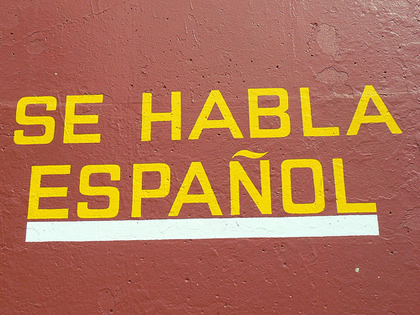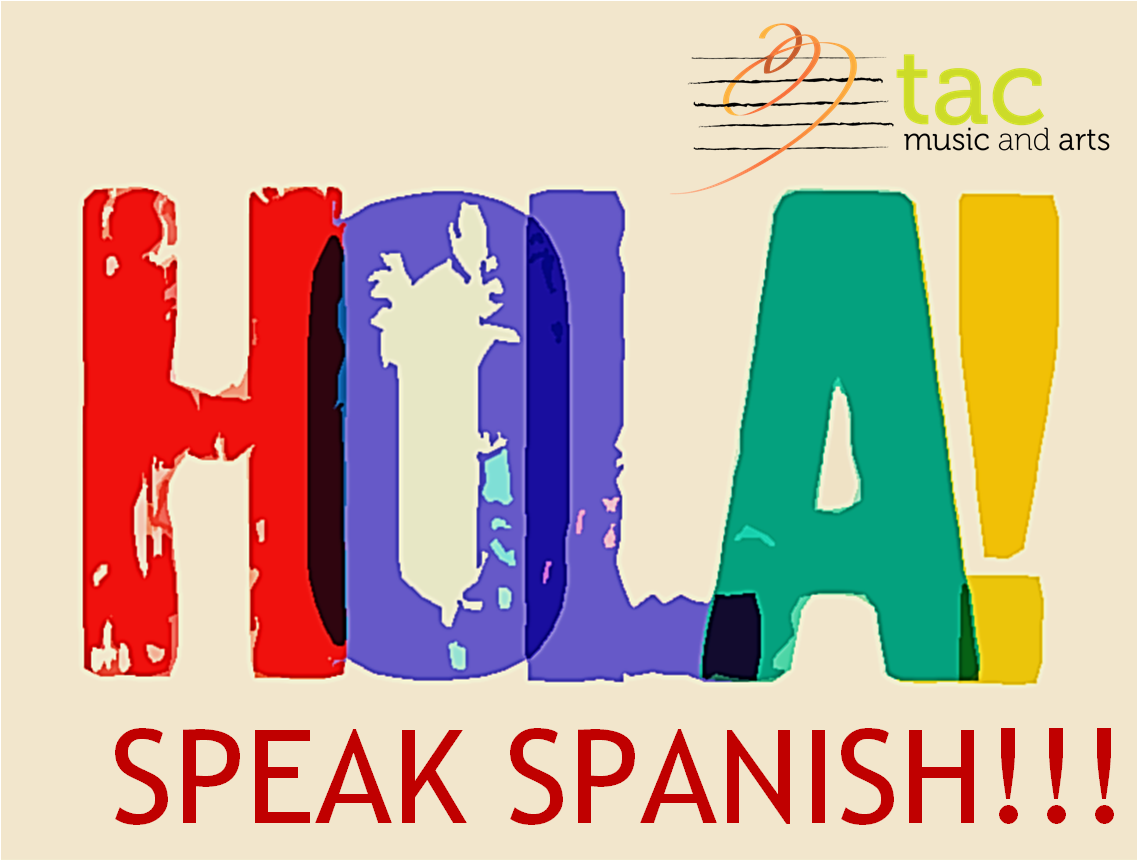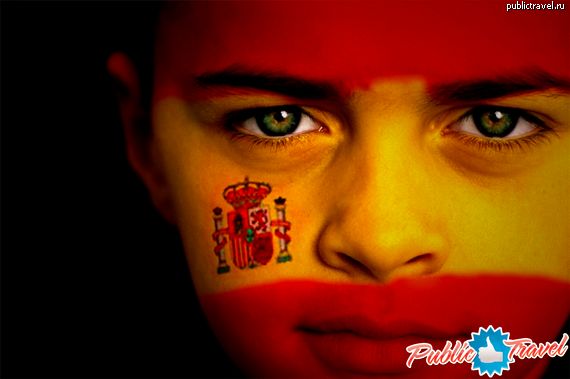"Mexican" language
The most popular questions from potential tourists before heading to Mexico!
1 question. What is the language in Mexico? What language does Mexico speak? What language does Mexico speak? What is the official language of Mexico? What is the official language in Mexico?
Answer: More than 90% of Mexicans consider Spanish (more precisely, Mexican Spanish) their native language and actively use it in communication both at home with family and in society. It is also the official language of the United States of Mexico. Less than 10% use one of the home languages (pre-colonial period) when communicating with their native people. In the State of Quintana Ru, where the city of Cancun is actually located, the Yucatac language is widespread, which, in turn, is divided into 5 dialects!) It is spoken by the descendants of the ancient Mayans.

Among non-home languages, preference is given to English. The proximity to the USA and, naturally, a large number of tourists from the USA and Canada have an effect. Knowledge of English is often a prerequisite for employment in tourism and service industries.
The Russian language is a little more difficult. You can count the number of Mexicans who speak Russian on one hand!)
Friends! If you have any questions - don't hesitate! - ask them in the comments below or write to me on social networks!
Arsen Azibekov- Excursions in Mexico company.
8-800-100-4768 (Hotline, 24 hours, free in Russia)
+7 499 677 1508 (For Moscow and Moscow Region)
+521 998 203 4014 (write on Whatsapp, call on Viber)
+ 521 998 735 4768 (write to Whatsapp, call on Viber)
Our Mexico group in In contact with
Our Mexico group in Odnoklassniki
 Do you speak Spanish?
Do you speak Spanish?  Ola! Speak Spanish!
Ola! Speak Spanish!  Spanish is the third most spoken language in the world
Spanish is the third most spoken language in the world
AZTEC LANGUAGES, a group of Indian languages in Mexico and El Salvador, one of the main groups of Uto-Aztecan language family. In total, in the Uto-Aztec family, according to different classifications, there are from 3 to 9 groups. On the basis of territoriality, three groups are often distinguished: Shoshone languages, common in the United States - in the Great Basin and the Southwest, Sonoran languages, common in northwestern Mexico and the surrounding areas of the United States, and Aztec languages. The Aztec group is divided into three subgroups - the extinct language mexican state Oaxaca, the endangered Pipil language of El Salvador, and the Nahuatl group, or Aztec languages proper. Among Aztec proper, the now dead classical Nahuatl (= Aztec; Mexican; Nahuatl) stands out - the language of the Aztec empire, conquered by the Spaniards in the 16th century. In addition, there are 26 modern Nahuatl languages spoken in central Mexico, with speakers ranging from a few to several hundred thousand people, and a total of ca. 1.4 million people. The largest of these languages are: Eastern Huastec Nahuatl (about 410 thousand speakers), Western Huastec Nahuatl (about 400 thousand), Guerrera Nahuatl (about 300 thousand). Although these are all different languages, the collective use of "Nahuatl language" is often found, including classical Nahuatl and all modern varieties. Social status Aztec languages are low. Survival prospects vary for different languages; many of them are already extinct or are on the verge of extinction.
Aztec languages have been studied since the mid-16th century, when the first grammar of classical Nahuatl was published. For a long time, Nahuatl was described only by Christian missionaries. At the beginning of the 19th century. One of the Nahuatl languages was studied by the German linguist Wilhelm von Humboldt. Currently, many of the Aztec languages are well documented and taught in schools.
From the beginning of the 15th century, about 100 years before the Spanish Conquest, the Aztecs began to use hieroglyphic, mainly ideographic, writing, which arose under the influence of the Mixtec script; the latter, in turn, goes back to the writing of the Zapotec Indians, who borrowed the idea and basic principles of writing from the Olmecs and possibly from the Mayans (see MAYAN LANGUAGES). Later, the Aztecs developed some elements of phonetic writing, especially when writing names. Currently, Latin-based writing has been developed for many Aztec languages.
Aztec languages are highly synthetic and have accusative sentence construction.
In the Russian language there are a number of indirect borrowings from the Nahuatl language, which came through the Spanish and English (or French) languages: tomato, chocolate, avocado, coyote, ocelot. For example, the word chocolate comes from the Aztec xocolatl, "bitter water."
The second article of the basic law of this country defines it as a multicultural state that recognizes the right of indigenous peoples to preserve and develop their own dialects and dialects, and therefore there is no official state language of Mexico. But most residents of the country of tequila and cacti still prefer Spanish.
Some statistics and facts
- The Mexican government recognizes the existence of 68 national languages as additional languages to Spanish.
- From 10 to 15 percent of the country's residents, according to various sources, consider themselves Indians.
- In total, the country is home to about 6 million people who are native speakers.
- The largest group of indigenous speakers are descendants of Indians who speak Nahuatl.
- The first attempts to introduce Spanish into Mexico were made in the 16th century.
- For 150 years since early XIX Until the mid-twentieth century, the number of Mexicans speaking ancestral languages fell from 60% to 6% of the country's total population.
Percentage of Mexican citizens who own English language, big enough. This is due to the close proximity and frequent seasonal work of Mexicans in factories and farms in the United States.
Lost in translation
Even visitors to Mexico who speak modern Spanish may experience certain difficulties in understanding here. Certain changes have occurred in the system of local Spanish, as a result of which the sound of individual sounds is only vaguely reminiscent today of the classics of the language widespread in the Pyrenees. At the same time, some linguists consider the state language of Mexico to be very conservative, since in it, in everyday use, words have been preserved that the Spaniards have considered archaisms for two hundred years and no longer use in their own speech.
Note to tourists
When traveling to Mexico, be prepared for the fact that English-speaking hotel or restaurant staff are only found in major cities and tourist resorts. In places where independent travelers prefer to navigate their routes, the percentage of such polyglots is negligible. The menu in a cafe away from the main streets of even the capital no longer contains the names of dishes in English, and it will be impossible to explain your gastronomic preferences to the waiter.
In general, a Russian-Spanish phrasebook on a trip can make a tourist’s life much easier, especially since Mexicans are very sociable, open and friendly.
Where is Mexico?
Mexico or the United Mexican States is a Latin American country. In the north, Mexico borders the United States. The country is washed in the west by the Pacific Ocean and in the east by the Caribbean Sea. The Gulf of Mexico is also located there. In the south, Mexico borders Guatemala and Belize (other Latin American countries). It should be noted that Mexico now has 1/5 of the total population of Latin America.
Who discovered Mexico?
The first European to set foot in Mexico was the Spanish navigator Francisco Fernandez de Cordoba, who discovered the Mayan settlement in 1517. In 1518, the Spaniard Juan de Grijalva discovered a rich Aztec civilization living in the open lands. In 1519, Hernan Cortes (a famous pirate) landed on the territory of future Mexico with a large detachment. He began to fight the Aztecs. In 1521, the Aztecs lost the war, and as a result their lands became colonies of the Spaniards.
Which historical facts known about Mexico?
Before the Spanish conquered Mexico in the 16th century, the Mayan and Aztec civilizations lived on its territory. In 1521, the Spaniard Cortes captured Mexico. In 1535, New Spain was founded in Mexico. In 1824, Mexico received its first constitution. In 1845, Texas separated from Mexico and became an independent state. The Mexican-American War took place in 1846-48, in which Mexico lost. As a result, half of this country went to the United States. In 1862-67, French troops invaded Mexico, over which the Mexicans won a number of victories. The Mexican Revolution occurred in 1910-20. In 1994, there was an uprising of the Zapatistas in Mexico, who demanded equal rights for the indigenous population of Mexico with all residents of its country. The last significant event in Mexico was the “cactus revolution” in 2006. These were numerous protests against President Felipe Calderon, elected that same year.
 Which city is the capital of Mexico?
Which city is the capital of Mexico?
The capital of Mexico is Mexico City. This city is located on the Mexican Highlands, whose altitude above sea level is 2 kilometers 234 meters. Throughout the year, small tremors are observed in the capital, which do not cause destruction and do not particularly bother local residents. However, stronger earthquakes sometimes occur. Dust storms are also common.
What attractions are there in Mexico?
Mexico has many attractions. The main ones are, of course, the pyramids, of which the most famous are the pyramids of Teotihuacan. In addition to them, the pyramids of Mitlet and Monte Alban are well known. The capital of Mexico is Mexico City, founded by Indians back in 1325. It also has many attractions: a pyramid from 450 BC, an Aztec pyramid, the National Cathedral, the building of the Jesús Nazareno hospital, the municipal palace, where the presidential residence and parliament are now located, the Sagrario Metropolitano church, monasteries and 10 archaeological parks. Interestingly, Mexico is famous throughout the world for its cheap resorts, for example, Cancun. It is a network of beaches that stretch for 140 kilometers. Mexico is also famous for the sacred Mayan city with the curious name Chichen Itza. Another world famous Mayan city is Palenque. It has many monuments of Mayan architecture and writing.
 What animals live in Mexico?
What animals live in Mexico?
The nature of Mexico is diverse with rare species of animals. These include the musk ox, gray and black bear, otter, monk seal, and marsupial rat. In addition to these animals, the following are also widespread: chinchilla, deer, puma, jaguar, slug, tapir and llama. Now in Mexico, a large number of animals are in danger of extinction.
 Who are the indigenous people of Mexico?
Who are the indigenous people of Mexico?
Several civilizations existed on the territory of Mexico before Europeans set foot there. The very first civilization was the Almecs. This civilization existed from 1500 to 600 BC. The next civilization was the Mayan tribe, which reached its full flowering in the 6th century AD. Four centuries later, the Toltec state arose on the territory of Mexico, and a hundred years later they were ousted by the Chichimec tribe. The latter were conquered northern people the Nahuas, whose most famous tribe were the Aztecs. Over time, they came to the fore, and by the 15th century they became the most powerful state in Latin America. However, sailors arriving from Europe soon enslaved the Aztecs.
What language is spoken in Mexico?
The official language of Mexico is Spanish, but many descendants of indigenous peoples still live in this country: Aztecs, Mayans, Totonacs, Otomi, Mije, Tzeltal, Tzotzil, Masahua and others. Naturally, they all speak the languages of their ancestors, but they also use Spanish.
According to 2008 estimates population Mexico had about 114 million residents. However, the 2010 census showed that this number was somewhat overestimated, and therefore the number population Mexico today is 112324000 Human.

According to the demographic growth scale Mexicans became larger every year, and the growth was Always smooth and progressive.

So back in 1961 quantity residents in the United Mexican States (so By the way, officially called Latin American state) was about 38 million people. Curve growth Mexico's population looks more upwardly mobile seventies years. It was then that the birth rate in this country was highest in the history of demographic research. Since the early 1990s, birth rates some fell, however, it is still observed today natural population growth of Mexico and Mexicans becomes More.

Mexico is one of those Latin American states on whose territory lives least of all whites. According to the official data, then there are no more than five percent white citizens of Mexico. Overwhelming a number of Mexicans are mestizos.

Population Mexico within the mestizo ethnic-racial group is near 65 million people. Besides Mexicans-mestizos and citizens from light color skin (Caucasian race) in Mexico there is also a fairly large ethnic group Indians. By the way, the indigenous peoples of Mexico his numbers occupy second place after mestizos. Among indigenous Mexican peoples are dominated by descendants Mayan who have already moved far from their historical roots and assimilate into modern Mexican society.

If we talk about those languages in which speaks the population of Mexico, then Spanish is the most common. He also has the status state language of Mexico. Almost 93% speak it in this country population.
Of course, Spanish is in Mexico was influenced by local Indian dialects, and today many words from the Mexican vocabulary are not for every Spaniard will understandable. Indian languages spoken in Mexico are around one percent of Mexico's population. That's about 1.2 million Human.
These people are completely unfamiliar with Spanish language, so they have significant difficulties in obtaining education. Exactly a significant part of the indigenous population of Mexico does not have no education. According to official data, about 9 percent Mexicans remain illiterate (this almost 11 million people). Low literacy rate population Mexico leads to the fact that among certain public layers flourishes crime.
According to Interpol modern Mexico is one of the most criminal countries Latin America. In the capital of Mexico alone daily recorded up to several hundred, and sometimes even thousand crimes. Most of the crimes are Pocket thefts and robberies are carried out precisely illiterate or illiterate Mexicans who difficult find Good work. Economic situation in Mexico is such that for one average Mexican total annual income is determined to be about 8.9 thousand dollars.
This is quite a low level even for Latin America. Mexico like most countries Latin America, with the exception of Haiti, is different high average life expectancy women. In 2010, this figure was 79 years.
Mexican men live on average for six years fewer women. Number population Mexico. corresponding to the Catholic confessional accessories is about 85 millions people (this is 76.5%). Besides Catholics in Mexico lives a fairly large number of Protestants (6.3%), and Also atheists (3.1%).
The rest, answering question about their religion, they say that they are with the confession Bye undecided. According to the number of “undecided” people, Mexico holds first place among all countries in the region. Annual annual Mexico population growth amounts to from 1 to 1.2%. On average Mexican A woman has about 2.4 births in her lifetime. This some lower than it was 10-15 years ago and much lower than was in the 70s of the 20th century.
In Mexico today the majority population(77%) lives in cities, and the overwhelming majority majority- in the capital - the huge city of Mexico City. Quantity Mexicans infected with HIV is assessed at 0.35%. Also see: State symbols of Mexico State symbols Mexico reflect its cultural and historical development. Coat of arms, the flag and anthem of Mexico are a set of principles way of life life and aspirations forward of a multinational Mexican people. Let's look at the symbols of this Latin American states in detail.
Spanish in Mexico (Spanish) Español Mexicano) - a group of adverbs, dialects and sociolects, component a special language variant of Spanish language in Mexico, based on the language norm Mexican capital is Mexico City. which is literary standard for this option. Spanish majority other regions of the country is quite close to the metropolitan norm, behind with the exception of special Yucatan dialects ( Yucatan Spanish, based on Caribbean Spanish) and Chiapas(Central American Spanish). Mexican Spanish(as well as various dialects within it) is mother tongue for approximately 125 million people (out of which over 100 million live in Mexico and about 25 millions in USA. mainly in border areas Texas. California, Arizona, New Mexico, etc.).
All countries of Central and South America Spanish is spoken, except in Brazil, where Portuguese is spoken. That is, there is no Mexican language as such. BUT! Spanish in Spain and Spanish in Mexico, Peru, Bolivia, etc. will be different. How is English, for example, different in the UK, Australia, USA, etc. Slightly different pronunciation, slang, some words, sometimes minor differences in grammar. But in any case, it is the same language.
In Mexico this option Spanish language is the only one official at the federal level and one of the official ones (along with many Indian languages) at the state level. Mexican Spanish is also the basis for Spanish language in the USA (see Spanish in the USA), widely used in the media (Univision, Telemundo channels, etc.), education etc. Additionally, Mexican Spanish is the most a common language variant of Spanish language, since it is native to most Mexicans. making up about 29% of all Spanish speakers in world.
Key Features Spanish language in Mexico - clarity of pronunciation of consonants ( especially d and s) close to classical standard Spanish language of the 16th-17th centuries with a strong influence of autochonous languages in the field of vocabulary.

Until the 16th century, the territory modern Mexico was inhabited by quite numerous Indian tribes who spoke several languages dozens languages, the most widespread of which were: Navajo in the north, Mayans. Nahuatl in the center and many other, which had a significant substrate influence into Spanish, which she initially spoke only a small but elite stratum of conquistadors. administrators and officials and immigrants from Spain, constituting about 5% of the population. However, thanks to his prestige and intense interracial contacts ( miscegenation), Spanish becomes the main language means communication for the bulk of Mexicans already in the 17th century century.
The official language of Mexico is Spanish, but many descendants of indigenous peoples still live in this country: Aztecs, Mayans, Totonacs, Otomi, Mije, Tzeltal, Tzotzil, Masahua and others. Naturally, they all speak the languages of their ancestors, but they also use Spanish.
And yet, unlike the USA, Mexico has never pursued a policy of genocide against indigenous population. After a sharp decline in the number of Indians from diseases brought by Europeans, their number stabilized already in the XVII-XVIII centuries. In XIX-XX centuries number of speakers of Amerindian languages in Mexico increased quite significant, although their share in the population as a whole continued shrink due to even faster growth quantities Hispanic mestizos. However, the influence of Indian languages, which are still spoken by 7-10% Mexicans remains significant.